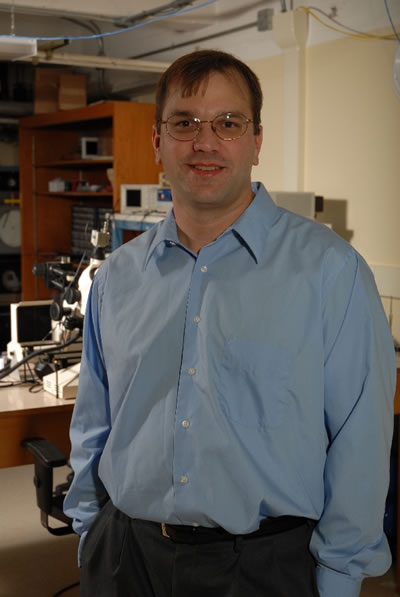

 Associate Professor of Electrical and Computer Engineering
Associate Professor of Electrical and Computer EngineeringPh.D. - University of Michigan
Electrical Engineering and Computer Science
M.S. - University of Michigan
Electrical Engineering and Computer Science
B.S. - Pennsylvania State University
Engineering Science and Mechanics
German
Contact Information
Office: 302 Riggs Hall
Office Phone: 864.656.5906
Fax: 864.656.5910
Email: regroff@clemson.edu
Professional
Dr. Groff’s dissertation research at the University of Michigan was on algorithms for approximation of invertible functions using piecewise linear homeomorphisms, developed to improve color consistency in electrophotography as part of a university-industry collaboration with Xerox Corp. These algorithms were also applied to machine learning, including gait adaptation for the six-legged robot RHex.
Prior to joining Clemson University in Fall 2006, Dr. Groff worked as an IC Postdoctoral Research Fellow in the department of Electrical Engineering and Computer Science at the University of California Berkeley. Dr. Groff’s work in gecko-inspired adhesives demonstrated that a normally low friction material such as polypropylene can be micro- and nano-structured to behave like a high friction, or even adhesive, material at the macro-scale. Dr. Groff incorporated gecko-inspired adhesives into small insect-like crawling robots made with carbon fiber composites, flexure joints and piezoelectric actuators.
Dr. Groff is a member of IEEE and ASME.
Research
Dr. Groff is broadly interested in the application of systems theory to the design, analysis, and fabrication of physical systems, especially systems at small length scales and biological systems. Current research themes include bio-inspired design and control, use of novel materials in sensors and actuators, and fabrication and rapid prototyping of electromechanical systems at small length scales.
Representative projects include:
Magnetic Microfibers – polymer fibers embedded with paramagnetic nanoparticles (fabricated by Clemson Materials Science & Engineering) align with magnetic field lines. Using video feedback from a microscope, the position of a magnetic microfiber can be controlled with an array of electromagnets. These fibers will be used in microfluidics for moving drops of liquid and as actuators for small swimming robots.
Bio-Printing – In collaboration with Bioengineering, a “bio-printer” is being developed to accurately place multiple types of living biological cells in three dimensional patterns. The Bio-Printer will serve as a platform for studying systems biology and tissue engineering, which offer exciting new frontiers for systems theory.